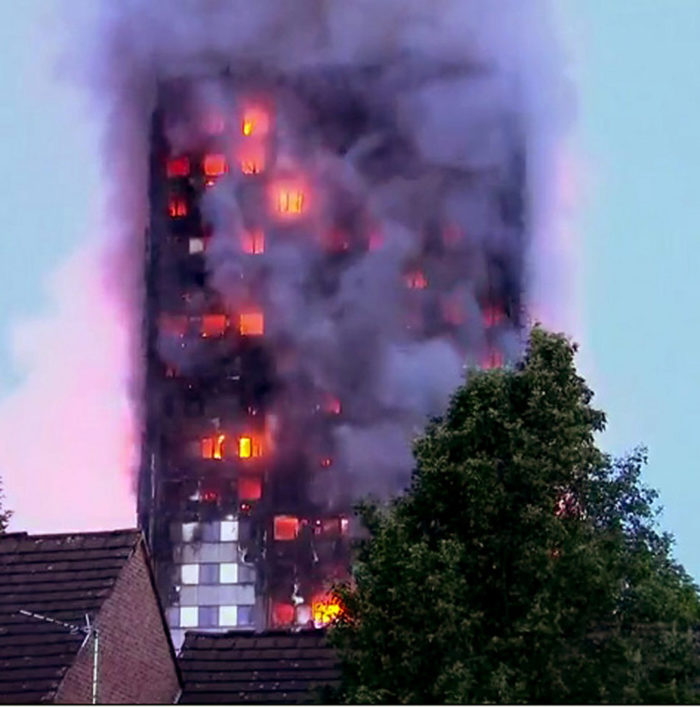
Image Credit: 70023venus2009 / CC BY-ND 2.0 / Flickr
The Grenfell Tower fire in London has triggered questions about how the tragedy could have happened, whether it could happen elsewhere, and what might be learned from it to prevent future disasters. As a professor of fire protection engineering, I know that the answers are not simple, and the fixes not quick.
Investigations into what actually happened at Grenfell Tower are still ongoing. While some factors have been identified, completing the picture could take years. As details emerge, though, it may not be easy to translate them to other situations. Buildings differ widely, based on when each was constructed and any renovations or other modifications since. And then there are the different rules, design concepts and construction practices that vary from country to country, and, in the U.S., sometimes from state to state.
The basic problem, however, is clear: The Grenfell Tower fire spread much faster and more intensely than anyone expected. From what we know so far, there are physical, cultural and legal reasons dozens, and possibly hundreds, of people died. Addressing each of them will help British authorities, and fire protection and fire prevention professionals around the world, improve their efforts to reduce the chance of future tragedies like the one at Grenfell Tower.
Structure
It appears that the main problem was the dangerously flammable cladding, the material covering the outside of the building — aluminum panels with foam insulation installed in a recent effort to improve the building’s energy efficiency. Once the fire escaped the apartment where it began, reportedly in a refrigerator, and ignited the cladding, the rest of the building was primed to burn quickly.
Additional insulation underneath that cladding may have released poisonous fumes as it burned, overcoming residents who might otherwise have escaped the flames.
In addition, the building lacked an automatic fire-sprinkler system, and had only a single stairway to get out.
Culture
That lone stairway — and the fact that building occupants were reportedly told to remain in their apartments in case of fire — are the result of fire safety culture influencing emergency planning. In England and around the world, including the U.S., the historical approach has been to rely significantly on the fire resistance of the structure itself to contain the fire. We call this “passive” fire protection, and it largely involves using non-combustible materials to separate areas, limiting how far a fire can spread.
This concept has been used at least since the 1666 Great Fire of London, as a way to prevent city-wide conflagrations from developing when a blaze burning in one building catches the structure next door. The same principle is used within buildings, for example by requiring fire-resistant construction among apartments or offices on each floor, as well as between floors.
However, the concept only works when the initial fire is contained. That didn’t happen at Grenfell Tower. Once the fire reached the external cladding, it spread rapidly. If the building’s residents had their windows open for ventilation, the fire could have spread even faster: The heat just outside could have ignited drapes or other items near the windows.
With multiple fires burning simultaneously in different apartments on several floors, the situation would have been grim. There were no sprinklers to quench the flames. And the only stairway down for the building’s occupants was also the only stairway up for firefighters coming to the rescue.
This situation was very similar to the confluence of problems in the 2001 World Trade Center disaster, when multiple fires burned across several floors simultaneously, the automatic sprinkler system was damaged, and some exit stairways were blocked. Occupants of the Twin Towers buildings and Grenfell Tower who were above the fires had few options — because they were not expected to need them. The regular fire safety plans didn’t call for immediate evacuation, because the building’s construction was supposed to keep a large fire from happening.
Rules
Those expectations about how structures will function in a fire inform the rules people make about how to protect occupants of a burning building. In most countries, including the U.S., the rules governing how buildings are constructed are enforced when a new structure is going up.
As we learn more over time about how to keep people safer, building codes change — but they usually apply just to new structures, not existing ones. The new codes can kick in if there’s a major renovation or expansion project or the building’s main use changes from, say, offices to apartments. That means many buildings aren’t up to modern standards.
In addition, it takes time from when a model building code is published, to when it becomes adopted into legislation. As such, even a building constructed in 1997, if it hadn’t been significantly renovated, may not have to comply with new provisions introduced in the 20 years since.
There are some exceptions. Many parts of the U.S. required building owners to install automatic sprinkler systems in existing high-rise buildings in the wake of the 1980 MGM Grand Hotel fire in Las Vegas. A similar requirement in the U.K. didn’t take effect until 2007; existing buildings are not covered unless a specific risk assessment recommends otherwise.
Could it happen here?
There have been many exterior-cladding fires in high-rise buildings around the world, including in Australia, the Middle East and here in the U.S. In September 2007, the Water Club tower at the Borgata Casino hotel in Atlantic City, New Jersey, caught fire. The building was under construction at the time, so it was largely unoccupied. And there was a concrete wall separating the burning cladding from the rest of the building.
In the U.S., most fire codes limit the use of combustible exterior cladding material, particularly on high-rise buildings. The requirements for automatic sprinklers (one element of what we call “active” fire protection systems) and at least two escape routes from every floor add depth to these defenses. Together, these rules increase the chance that a small fire will be put out quickly, reduce its ability to spread up the side of the building, and help people get out if they need to.
Several other Grenfell Tower-like buildings have already been identified in the U.K. These high-rises have combustible cladding or insulation, either permitted at the time of construction or perhaps added during a retrofit. Some of those buildings may not have sprinklers, either. The thousands of residents of those buildings have already been evacuated to prevent a repeat disaster.
But at least in the U.S., most will have both sprinklers and multiple escape routes. So while another tragic event like the Grenfell Tower fire is possible, we can hope that building owners and fire protection experts alike will learn from this disaster and work even harder to prevent it from happening again.
Brian Meacham is an associate professor of fire protection engineering at Worcester Polytechnic Institute. This post originally appeared at The Conversation.
Weekly Newsletter
Get building science and energy efficiency advice, plus special offers, in your inbox.





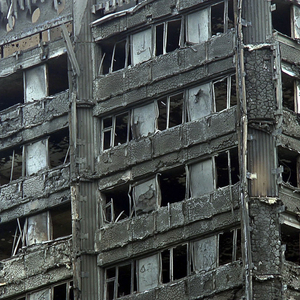
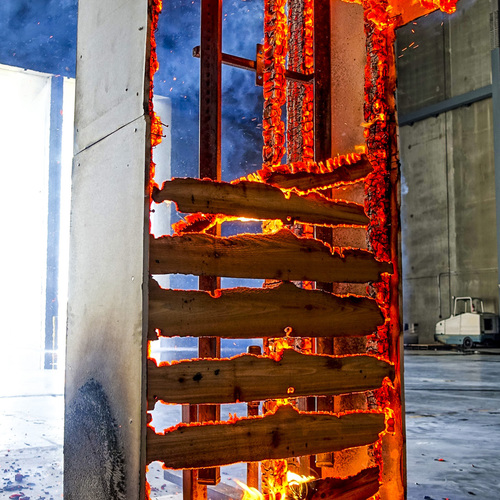
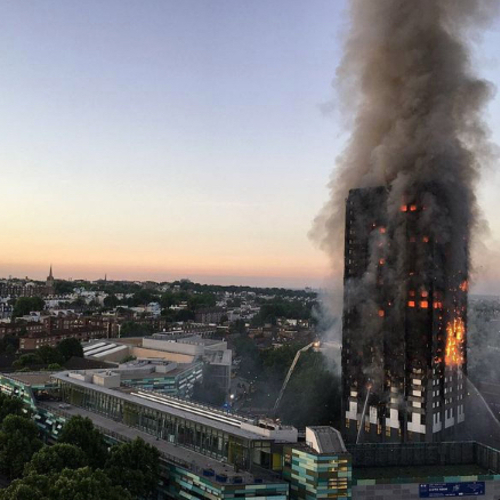
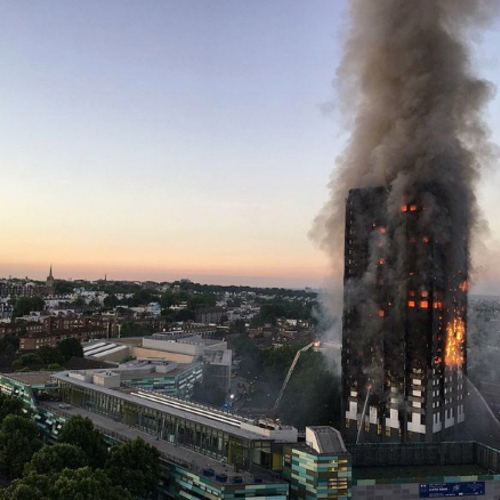






6 Comments
Blaming the right problem...
"It appears that the main problem was the dangerously flammable cladding"... Really?
I would think, first, IF the apartment building had installed a fire sprinkler system, the fire which started in a refrigerator, would had not spread, or as soon or easily to the insulated cladding. Second, it should have been retrofitted with additional exterior fire stairways. Third, what was the quality of the existing electrical system? Maybe the building owners didn't have a full risk assessment made before the retrofit and tried to save some money.
I'm not sure that insulated cladding was the "main problem" to the horrible fire.
the elephant in the room
Doesn't this story give pause to proponents of exterior foam insulation under a rain screen gap and siding? Seems somewhat analogous.
Fires and foam
You bring up a great point, Ethan. The below is an interesting take on SIPs I found on a firefighters' forum. Scary stuff. Roxul boards sound better and better every day.
"At a recent MA job, our aerial was set-up about 40 feet from the structure. The original fire started in a vehicle in the attached garage. When we first arrived, there was very little smoke or apparent involvement in the main structure. The crew had already supressed the car fire, but due to the smoke issuing from the roof, there was an indication of fire in the roof area of the main building. Shortly, the smoke began rolling heavily into the main house, and before we could address the roof ventilation with the aerial, a large flame front issued from the cornice on the side toward the aerial. This flame was forcefully blowing more than 15 feet out of the cornice area. We had to abandon our position with the aerial as hand lines were ineffective at supressing the flame front coming from the cornice and the radiation was endangering the aerial and pump operator. It was apparent that there was a liquid component to the flame as there were ribbons of flame dripping fromthe cornice area. This was our first exposure to SIP's and our crews don't care if they never see another fire like this."
https://forums.firehouse.com/forum/strategy-tactics/fireground-tactics/105126-best-way-to-attack-an-attic-fire/page2
Insulated cladding?
I'm not convinced that the foam core of the aluminum cladding was supposed to provide insulation, given that it was outside an air gap. I suspect foam was used because it is light weight and cheap and needed to provide stiffness to the very thin aluminum.
Roxul boards
I agree with Jeff that there are lots of reasons to prefer roxul boards to for for exterior insulation. Only a few years ago it was hard to get and there wasn't a lot of experience using it that way. But it seems like it's pretty well proven now. And it has more advantages than just the fire resistance:
1) Adds extra moisture resiliency vs. foam that is near the minimum thickness for a particular climate zone.
2) No toxic, and apparently not all that effective, fire retardant chemicals.
3) Doesn't shrink.
4) Like EPS and polyiso, but unlike XPS, no high GWP blowing agents.
The investigation into what happened at Grenfell Tower is still ongoing and may take years to complete. While some factors have been identified, it may be difficult to apply these findings to other situations. Please check and try https://totomaker.io/토토사이트순위 Buildings can vary widely based on when they were constructed, any renovations or modifications made, and the different rules, design concepts, and construction practices that vary by country and state in the US.
The investigation into the Grenfell Tower tragedy is still ongoing and it may take years to fully understand what happened. Although some factors have been identified, it may be difficult to apply these findings to other situations. Buildings can vary greatly based on their construction date and any modifications that have been made. Additionally, rules, design concepts, and construction practices can differ between countries and even between states in the United States. Therefore, it may not be easy to draw general conclusions from the Grenfell Tower investigation that can be applied to other buildings or situations.
Log in or create an account to post a comment.
Sign up Log in